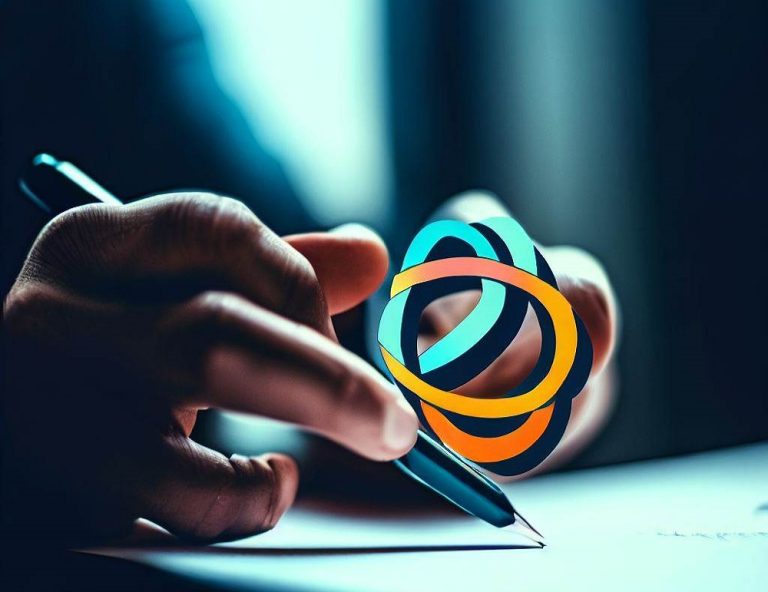The Power Of A Logo In Elevating Your Business Identity

In the ever-evolving landscape of business, establishing a strong brand identity is paramount to success. Among the various elements that contribute to a brand’s visual identity, the logo holds a special place of significance.
Serving as the face of your business, a well-designed logo has the power to communicate your values, establish recognition, and leave a lasting impression on your target audience.
In this article, we delve into the significance of a logo for your business and explore how it can elevate your brand identity, shaping the perception of your business and driving its success.
Contents
The Power Of A Logo
1. Visual Representation And Brand Identity
A logo serves as a visual representation of your brand, encapsulating the essence of your business and conveying its personality, values, and mission. It is the cornerstone upon which your brand identity is built.
When designing a logo, strategic elements such as color, typography, and imagery are carefully chosen to evoke specific emotions and create a connection with your audience.
For instance, vibrant colors may convey energy and excitement, while muted tones may evoke a sense of sophistication or tranquility. The choice of typography can communicate modernity, tradition, or playfulness, depending on your brand’s personality. Imagery, such as icons or symbols, can further enhance the logo’s ability to communicate your business’s purpose and values.
A well-designed logo acts as a visual shorthand, instantly communicating the nature of your business to potential customers. It becomes an integral part of your brand’s identity system, informing the design of other visual elements, such as websites, packaging, and marketing materials.
By ensuring consistency in these design elements, you create a cohesive and memorable brand experience, fostering recognition and establishing a strong visual presence in the marketplace.
2. Building Trust And Credibility
In a competitive business environment, building trust and credibility is essential for long-term success. A professionally crafted logo plays a crucial role in this process. When potential customers see a well-designed logo, it instills confidence in your brand, making them more likely to engage with your products or services.
A logo acts as a symbol of trust, indicating that you are a legitimate and reputable entity. It demonstrates that your business has taken the time and effort to establish a professional visual identity. A thoughtfully designed logo gives the impression that you pay attention to detail and care about delivering a quality experience to your customers.
Furthermore, a logo helps to establish a sense of familiarity and recognition. When customers encounter your logo repeatedly, whether through advertisements, social media, or packaging, it reinforces their trust in your brand.
Consistency in logo usage across different platforms and touchpoints creates a sense of reliability and professionalism, contributing to the overall credibility of your business.
3. Enhancing Brand Recognition
One of the primary objectives of a logo is to enhance brand recognition. In a fast-paced world where consumers are exposed to a multitude of brands, a memorable and distinctive logo can make your business stand out from the competition.
A strong logo acts as a visual cue, triggering instant recognition and recall in the minds of consumers. When people encounter your logo, whether on a billboard, a website, or a product package, it should evoke a connection to your brand.
Over time, through consistent exposure and positive experiences, a well-recognized logo becomes synonymous with your brand’s values, products, and services.
To achieve effective brand recognition, it is crucial to design a logo that is unique, simple, and memorable. A logo that is too complex or visually cluttered may fail to leave a lasting impression. Simplicity and clarity in design allow your logo to be easily comprehensible and identifiable, even at a glance.
Additionally, consistency in logo usage across various marketing channels and touchpoints is essential. By incorporating your logo into your website, social media profiles, packaging, and promotional materials, you reinforce brand recall and create a cohesive brand experience. Consistent logo usage across these platforms contributes to increased visibility, making your brand more easily recognizable and memorable.
4. Differentiation And Competitive Edge
In a crowded marketplace, differentiation is key to success. A thoughtfully designed logo can play a pivotal role in setting your business apart from competitors. It allows you to communicate your brand’s uniqueness and value proposition visually, helping you attract your ideal customers.
A distinctive logo captures attention and stands out in the minds of consumers. It should reflect your brand’s personality, values, and positioning. By aligning your logo with your unique selling proposition and target audience, you create a visual identity that differentiates your brand from competitors.
To achieve effective differentiation, it is crucial to conduct thorough research of your industry and competitors. This research will help you understand the visual landscape and ensure that your logo stands out. By employing design elements that are distinct from competitors, such as color schemes, typography, and symbols, you create a logo that captures attention and communicates your brand’s unique attributes.
Additionally, a well-designed logo can contribute to establishing an emotional connection with your target audience. Through thoughtful design choices, you can evoke emotions and associations that resonate with your customers, making your brand more relatable and memorable.
5. Adaptability And Versatility
A logo’s significance lies not only in its initial impact but also in its adaptability across various mediums and platforms. A well-designed logo maintains its integrity and impact, regardless of the channel or medium through which it is presented.
In today’s digital landscape, where brands interact with consumers across multiple online platforms, a logo must be adaptable and versatile. Whether it’s on websites, social media profiles, mobile applications, or email signatures, your logo should maintain its legibility, clarity, and visual impact.
Furthermore, a logo should be adaptable to different print materials and merchandise. It should translate well onto business cards, brochures, signage, packaging, and promotional items. Consistency in logo usage across these mediums ensures a cohesive brand experience, strengthening brand recognition and reinforcing your business’s visual identity.
Conclusion
In the dynamic world of business, a logo plays a pivotal role in shaping your brand identity and leaving a lasting impression on your target audience. From visual representation and building trust to enhancing brand recognition and differentiation, a well-crafted logo holds immense significance for your business. Embrace the power of a logo and invest in its design to elevate your business identity and pave the way for long-term success.






